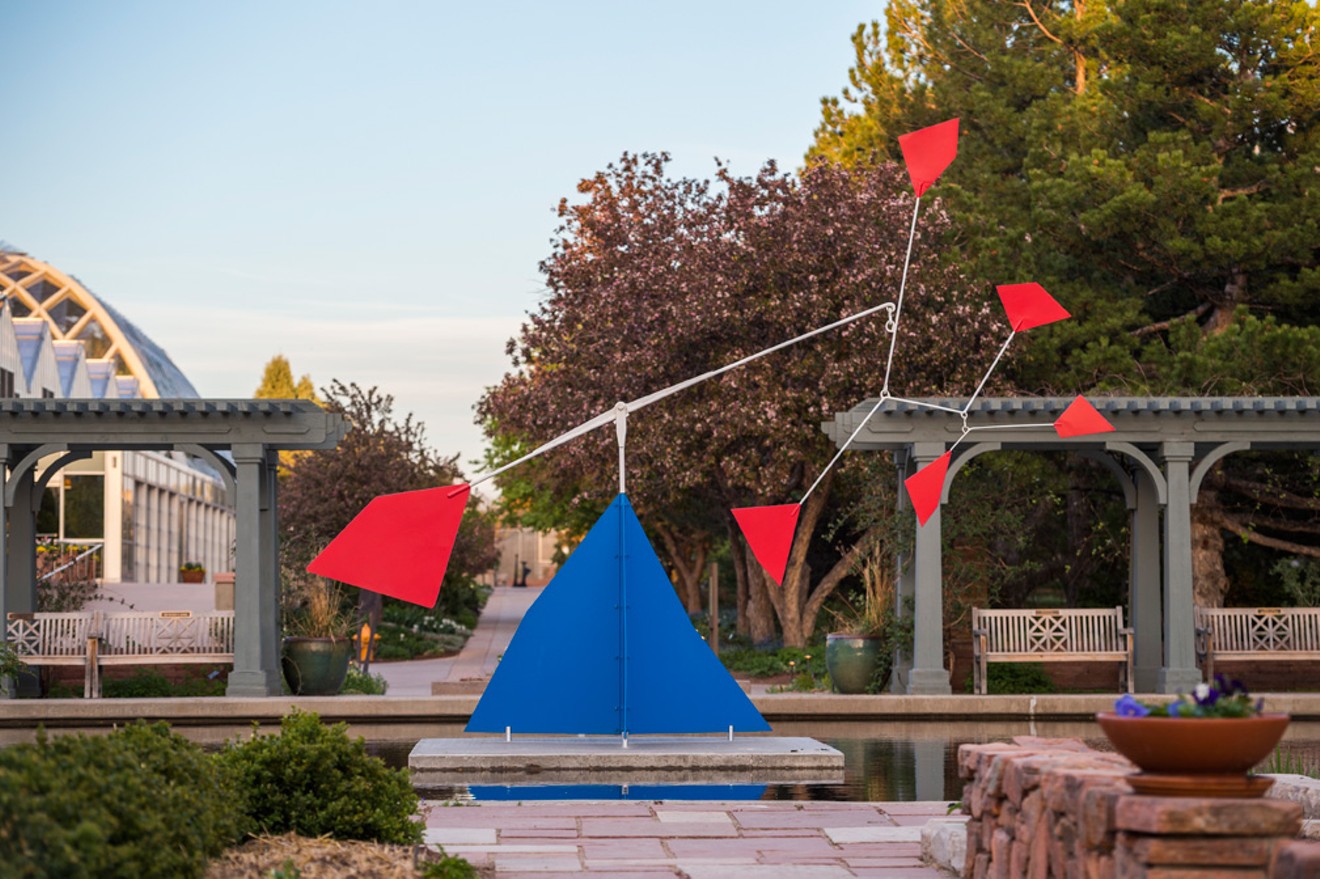
Alexander Calder, "Funghi Neri," sheet metal, bolts and paint, 112" x 91" x 72," 1957.
Denver Botanic Gardens
Most of the show comprises stabiles. Unlike the kinetic pieces, some of the stabiles don’t even look like Calders, but they definitely are. Some have figurative elements — which, though rare in the artist’s later work, was something he was known for early on. The oddest of the bunch is the untitled standing figure done the year that Calder died, which looks like a three-dimensional child’s drawing of a woman.
Even without the Calder sculptures, the DBG is worth a visit, but with this show, it’s a must. Calder Monumental runs through September 24 at the Denver Botanic Gardens, 1007 York Street; call 720-865-3501 or go to botanicgardens.org for additional information.











